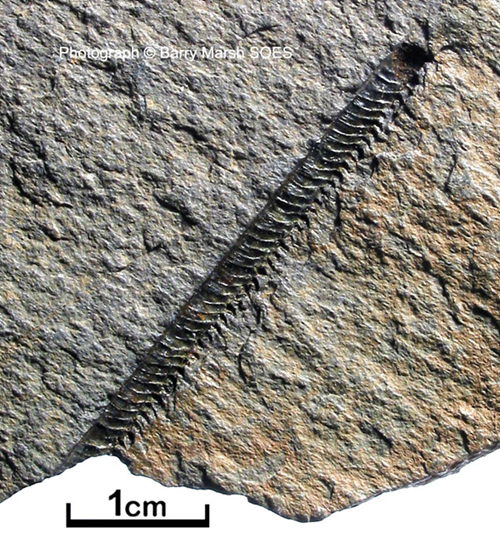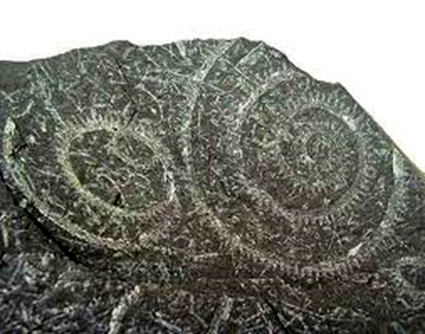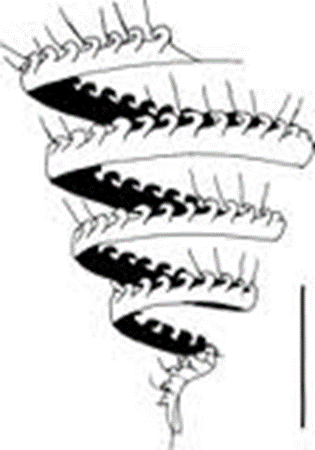Co To Fm
Type Locality and Naming
The section exposed on. Thanh Lan Island (N = 21°00'; E = 107° 48'), described in detail below in this work. The described formation occurs on over 40 islands and islets of the Co To Archipelago, situated in the extreme northeast of the Bac Bo (Tonkin) Gulf. Coeval with the Tan Mai Fm in more landward locations.
Synonym: Hệ tầng Cô To: Dovjikov A.E., Jamoida A.I. 1961 (N); Jamoida A.I. in Dovjikov A.E. et al. 1965 (N); Phạm Văn Quang 1970,1971 (S); Trần Văn Tri el al. 1970 (0 - Si), 1972,1973,1975, 1977 (0 3 - Si); Nguyễn Huy Mạc et al. 1972 (O3 - S); Phạm Đình Long et «/. 1975 (O3-SO; Nguyễn Văn Phúc 1977 (O3-S1); Đinh Minh ‘‘ Mộng 1979 (O3 -S1); Phạm Kim Ngân in Dương Xuân Hảo et al. 1980 (O3-S1); Nguyễn Công Lượng et al. 1980, 1983, 1998 (O3-S1); Lưomg Hồng Hược 1982, 1985 (O3-S,), 1987, 1995 (O3-S); Phan Cự Tiến et al. 1988 (O-S); Phạm Thanh Binh, Nguyên Công Lượng 1999 (Oj-S1); Nguyễn Xuân Khiển 2000 (O-S). Grès à debris de rkyoiite et en feldspaih: Patte E. 1927 (T); Fromaget J. 1941 (T). Hệ tầng Tẩn Mài: Phạm Kim Ngân et al. 1986 (Or S,), 1990 (03-S); Vũ Khúc, Bùi Phú Mỹ et al. 1990 (O-S)
Lithology and Thickness
Sandstone and Volcaniclastics: The Co To Formation is characterized mainly by polymictic sandstone bearing fragments of felsic volcanics, tuffaceous interbeds and gritstone, claystone of banded and rhythmic structure. By these characteristics it is distinguished from the Tan Mai and Phu Ngu formations of the same age, and from other Paleozoic units in East Bac Bo. Sediments of deep marine, fine-grained banded sediments. The Thanh Lan Section was described by Pham Thanh Binh and Nguyen Cong Luòng (1999) with two parts: a) the lower one composed of mixed sediments of deep marine intercalated with shallow marine facies; b) the upper part - of fine-grained, banded sediments of deep marine facies. This section, 710 m in thickness, can be subdivided in more detail into four members: (1). Black-grey, variegated weathering, irregularly thick-bedded (1-10 m), coarse-grained polymictic sandstone irregularly interbedded with thin-banded silty claystone; in some places there are lenses of conglomerate. Thickness over 200 m. (2). Very thick-bedded, mixed conglomerate and coarse-grained sandstone, usually cross-bedded polymictic sandstone bearing fragments of felsic volcanics interbedded with some thin- banded silty claystone and many lenses of tuffaceous pebble-bearing gritstone and sandstone. Black-grey silty claystone of the lower part of the member yields Early Silurian graptolites, such as Streptograptus exiguus, Monograptus priodon. Thickness 250 m. (3). Medium-bedded, medium-grained polymictic sandstone bearing fragments of felsic volcanics rhythmically interbedded with black-grey, banded silty claystone and sericitic clay shale; locally there are lenses of grey tuffaceous gritstone and sandstone, 160 m thick. (4). Greenish-grey claystone, dark grey thin-banded silty claystone interbedded with some grey silty sandstone; over 100 m thick.
Relationships and Distribution
Lower contact
The Co To Fm consists of the oldest sediments in the Co To Archipelago; therefore its stratigraphic relation with underlying sediments is unknown.
Upper contact
At the type section, it unconformably underlies terrigenous sediments of the Devonian Do Son Fm (now called the Van Huong Fm). Regionally, the next younger unit is the Kien An Fm of late Silurian.
Regional extent
The described formation occurs on over 40 islands and islets of the Co To Archipelago, situated in the extreme northeast of the Bac Bo (Tonkin) Gulf. It extends with a nearly vertical attitude along the NE-SW trend, from Lo Chuc San, through Thanh Lan to the Co To Islands.
GeoJSON
Fossils
Apart from Early Silurian graptolites, such as Streptograptus exiguus, Monograptus priodon, graptolites have been found in many other islands of the archipelago. In the southeast of Co To Island, there are Spirograptus turriculatus, in Thanh Lan Island - Spirograptus cf. minor, Spirograptus cf. turriculatus, Oktavites aff. planus, Spirograptus cf. regularis, Campograptus communis, Demirastites sp., Climacograptus sp., Monograptus ex gr. pandus, Streptograptus sp. (Tran Van Tri et al. 1972, 1975, 1977). In Con Ngua Island - Pristiograptus cyphus, Pristiograptus sp., Pseudoclimacograptus sp.; in Nui Nhon Islet - Demirastrites triangularis (Nguyen Huy Mac, Pham The Hien 1972). In Lo Chuc San Island - Streptograptus exiguus, ligofioclimacis linarsoni (collected by Ho Trong Ty, Pham Dinh Long and Phan Cu Tien 1978).
[Figure: Co To Fm (O3-S2 ct): Silurian: Graptolites Monograptus priodon (images courtesy of Prof. Ta Hoa Phuong, Vietnam Natl. Univ. Hanoi)]
[Figure: Co To Fm (O3-S2 ct): Silurian: Graptolites Spirograptus sp., (2 images) (images courtesy of Prof. Ta Hoa Phuong, Vietnam Natl. Univ. Hanoi)]
Age
Depositional setting
Island arc or forearc basin: Dovjikov A.E, and Jarnoida A.I. (1961, 1965) compared the Co To Fm with Neogene sediments occurring in the Red River intermontane trough, and therefore considered it as grey sub-continental sediments bearing volcanic materials, deposited in an often-disturbed basin. Recent studies have showed that the sections of the Co To Fm are similar to turbidites and they belong to a dissected island arc environment (Pham Thanh Binh and Nguyen Cong Luong 1999). The studies of Nguyen Xuan Khien (2000) have also shown that the clastic components of the Co To Fm originated from a regenerated orogenic process and were deposited in a forearc sedimentary basin.


